Table of Contents
Introduction
Historic Churches and Cathedrals have long been more than mere buildings; they are profound symbols of spiritual devotion, historical narratives, and architectural innovation. Throughout history, these sacred spaces have served as places of worship, community gathering, and cultural expression, reflecting the values and aspirations of their eras. This journey through historic churches and cathedrals is not just an exploration of their physical structures but an invitation to delve into the spiritual and historical significance they embody.
The purpose of this exploration is to uncover the layers of meaning embedded in these iconic edifices, tracing their evolution from early Christian basilicas to modern masterpieces. By examining key architectural styles, historical contexts, and cultural impacts, we aim to understand how these structures have influenced and been influenced by the spiritual lives of their communities.
From the humble beginnings of early Christian churches to the grandiose achievements of Gothic and Baroque architecture, each period reveals distinct approaches to design and decoration, driven by both religious and societal shifts. This journey will highlight the architectural innovations that have transformed these spaces into sanctuaries of faith, art, and history.
As we traverse through time, from Byzantine domes and Romanesque vaults to Renaissance elegance and contemporary minimalism, we will uncover how these sacred spaces continue to inspire and challenge our understanding of spirituality and architectural beauty. This exploration offers not only a historical perspective but also a reflection on the enduring legacy of these remarkable structures.
Purpose of the Journey
The purpose of this journey is to explore the profound significance of historic churches and cathedrals, which stand as enduring symbols of spiritual devotion, artistic achievement, and cultural heritage. These sacred spaces are more than mere buildings; they are reflections of the societies that built them and serve as tangible links to the past. By delving into their history, architecture, and cultural impact, we aim to uncover how these structures have shaped and been shaped by the religious and social dynamics of their times.
Understanding their impact on spirituality and architecture provides insight into how these edifices have influenced religious practices and architectural trends. Historic Churches and Cathedrals have served as centers of worship, community, and artistic expression, driving innovations in design and construction while simultaneously reflecting the spiritual aspirations and values of their era.
Overview of Key Themes
Architectural Styles
- The exploration of various architectural styles is central to understanding the evolution of church and cathedral design. From the early Christian basilicas and Byzantine domes to Gothic spires and Renaissance harmonies, each style reflects the aesthetic preferences, technological advancements, and spiritual aspirations of its time. This journey will highlight how these styles emerged, evolved, and influenced one another, showcasing the diversity and ingenuity in sacred architecture.
Historical Context
- Examining the America historical context in which these historic churches and cathedrals were built offers a window into the religious, political, and social conditions that shaped their construction. By understanding the historical tour events, societal changes, and cultural movements of different periods, we can appreciate how these structures served as responses to and reflections of their times. This contextual exploration helps illuminate the reasons behind their design choices, construction methods, and the role they played in their communities.
Cultural Significance
- The cultural significance of historic churches and cathedrals extends beyond their architectural grandeur. These structures often embody the values, beliefs, and artistic expressions of their societies, serving as landmarks of cultural identity and heritage. By exploring their role in local traditions, artistic endeavors, and communal life, we gain insight into how these buildings have shaped and been shaped by the cultural landscapes in which they exist. This theme underscores the lasting impact these sacred spaces have on collective memory and identity.
Early Historic Churches and Cathedrals
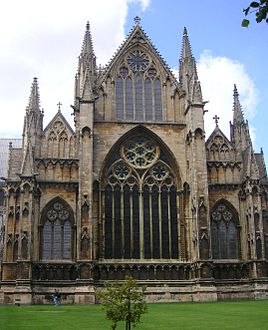
Early Christian churches, emerging in the 4th century AD, mark a pivotal transition from Roman pagan temples to spaces dedicated to Christian worship. Initially, Christians met in private homes or converted buildings, but as the faith gained acceptance, particularly after Emperor Constantine’s Edict of Milan in 313 AD, there was a growing need for more formal places of worship. The architectural approach of these early churches often involved adapting the Roman basilica—a rectangular hall used for public gatherings—into a Christian context. Characterized by their simple, functional design, these churches featured long naves and side aisles, with the altar positioned at the end of the main hall. This layout facilitated congregational worship and processional rites. Key examples include the Old St. Peter’s Basilica in Rome and the Church of the Holy Sepulchre in Jerusalem, which not only served as important religious centers but also as symbols of the burgeoning Christian community’s influence. The early Christian church architecture laid the groundwork for subsequent developments in sacred design, reflecting both the practical needs and spiritual aspirations of its time.
Origins and Development
The origins and development of early Christian churches were shaped by the transition from Roman pagan temples to spaces dedicated to Christian worship. As Christianity evolved from a persecuted sect to an officially recognized religion under Emperor Constantine, there was a need to establish distinct places of worship. Early Christians adapted existing Roman architectural forms, particularly the basilica, to fit their religious practices. Originally, basilicas were large public buildings used for administrative and judicial purposes. Early Christians repurposed these structures, transforming them into places of congregational worship. The design of early Christian basilicas was straightforward, characterized by a longitudinal plan that included a central nave flanked by side aisles, with a raised sanctuary at one end. This arrangement facilitated processional rites and accommodated the growing number of worshippers.
Early Christian Basilicas
The adaptation of the basilica form for Christian worship was both practical and symbolic. The longitudinal layout of the basilica was well-suited to accommodate large congregations and processions, essential for Christian liturgical practices. The central nave, often higher and more prominent than the side aisles, emphasized the importance of the altar and the sacramental rites performed there. Early Christian basilicas also incorporated elements such as the apse—a semicircular recess at the end of the nave where the altar was placed—and a clerestory for natural light. This architectural configuration not only supported the functional needs of worship but also symbolized the Christian understanding of the divine presence and the heavenly realm.
Transition from Roman Temples to Christian Worship Spaces
The transition from Roman temples to Christian worship spaces involved a significant shift in both purpose and design. Roman temples were dedicated to pagan gods and featured a cella, or inner chamber, where statues of deities were housed. In contrast, early Christian churches focused on communal worship and the celebration of the Eucharist, necessitating a different spatial arrangement. The adaptation of the basilica form allowed early Christians to create spaces that emphasized the centrality of communal prayer and liturgical practices. Over time, this transition also reflected broader changes in religious and social dynamics, as Christianity increasingly defined itself as a distinct and organized faith within the Roman Empire.
Key Examples
Old St. Peter’s Basilica, Rome Old St. Peter’s Basilica, commissioned by Emperor Constantine in the early 4th century, stands as one of the most significant examples of early Christian basilica architecture. Constructed over the site traditionally believed to be the burial place of Saint Peter, this grand structure was a focal point for Christian worship and pilgrimage. The basilica featured a long nave with side aisles, an apse at one end, and an extensive atrium, reflecting the typical early Christian layout while also emphasizing the site’s sanctity. Although it was replaced by the current St. Peter’s Basilica in the 16th century, Old St. Peter’s remains a symbol of early Christian architectural and spiritual heritage.
The Church of the Holy Sepulchre, Jerusalem The Church of the Holy Sepulchre, also built under Constantine in the early 4th century, is another pivotal example of early Christian architecture. Located on the site believed to be the location of Christ’s crucifixion, burial, and resurrection, the church was constructed to commemorate these sacred events. Its layout included a rotunda, known as the Anastasis, which housed the purported tomb of Christ, surrounded by a complex of chapels and courtyards. The Church of the Holy Sepulchre has been a major pilgrimage site for Christians throughout history, reflecting the early Christian emphasis on sacred geography and the veneration of holy sites.
Byzantine Architecture
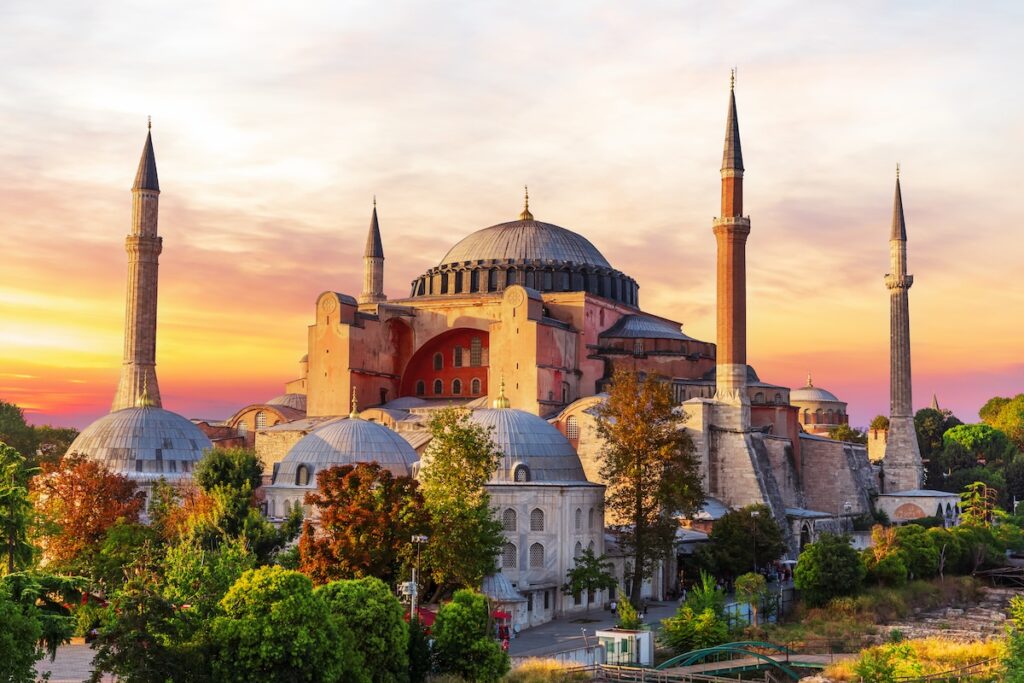
Byzantine architecture, which flourished from the 4th to the 15th centuries, represents a distinctive evolution in sacred design, characterized by its innovative use of domes, intricate mosaics, and richly decorated interiors. Emerging from the Eastern Roman Empire, Byzantine architecture was influenced by both Roman engineering and the religious needs of early Christians. One of the most notable innovations of Byzantine architecture was the development of the pendentive dome—a construction technique that allowed for the placement of a dome on a square base. This architectural breakthrough enabled the creation of expansive, airy interiors that symbolized the divine and the heavenly realm.
The use of domes in Byzantine churches was not merely aesthetic but also deeply symbolic. The dome often represented the vault of heaven, and its grandeur was meant to evoke a sense of the divine presence. The interiors of Byzantine churches were typically adorned with elaborate mosaics and frescoes, depicting biblical scenes, saints, and religious symbols. These artworks served both devotional and instructional purposes, helping to convey complex theological concepts to worshippers.
Architectural Innovations
Byzantine architecture is renowned for its groundbreaking innovations that transformed the design of sacred spaces. Among the most significant architectural achievements was the development and widespread use of domes, particularly the pendentive dome. This technique involved the construction of a dome over a square or rectangular base using a series of curved triangles known as pendentives. These structures allowed for larger, more open interiors and created a sense of celestial grandeur that became a hallmark of Byzantine churches. The dome was often placed at the intersection of the nave and the transept, symbolizing the heavens and drawing the worshipper’s gaze upwards.
In addition to domes, Byzantine architecture is notable for its lavish use of mosaics. These intricate artworks, made from small pieces of glass, stone, or tile, covered walls and ceilings, creating vibrant, enduring images of biblical scenes, saints, and divine figures. The reflective quality of mosaics not only added to the visual splendor but also contributed to the creation of a mystical atmosphere, enhancing the spiritual experience of the worshippers. The mosaics served both a decorative and didactic function, communicating theological concepts and religious narratives to an audience that might not have been literate.
Use of Domes and Mosaics
The use of domes in Byzantine architecture was revolutionary. The central dome, often accompanied by smaller domes or semi-domes, created a unified and expansive interior space that symbolized the divine and the celestial. This architectural feature was designed to evoke a sense of awe and transcendence, aligning the physical space with the spiritual experience. The domes were typically adorned with mosaics depicting Christ, the Virgin Mary, and other religious figures, reinforcing their symbolic significance.
Mosaics played a crucial role in Byzantine churches, transforming the interior into a vibrant and illuminated space. The use of gold and vivid colors in mosaics not only added to the aesthetic beauty but also reflected light in ways that enhanced the ethereal quality of the space. Scenes from the Bible, portraits of saints, and abstract patterns were meticulously crafted to create a visual narrative that guided worshippers in their spiritual journey. The intricate designs and the play of light and color were intended to elevate the worshipper’s experience, connecting them with the divine.
Key Examples
Hagia Sophia, Istanbul Hagia Sophia, completed in 537 AD, is a prime example of Byzantine architectural innovation. Its most striking feature is the massive central dome, which seems to float above the central nave thanks to the ingenious use of pendentives. The dome’s grandeur and its mosaic decoration, including the famous depiction of Christ Pantocrator, create an awe-inspiring effect that embodies the spiritual aspirations of the Byzantine era. The building’s interior is richly adorned with mosaics that reflect both religious iconography and imperial power, highlighting the church’s significance as a center of worship and a symbol of the Byzantine Empire’s divine mandate.
Church of San Vitale, Ravenna The Church of San Vitale, completed in 547 AD, exemplifies the use of domes and mosaics in Byzantine architecture. Its octagonal plan is crowned with an elegant dome supported by intricate, angular construction. The church’s interior is renowned for its stunning mosaics, including the famous panels depicting Emperor Justinian and Empress Theodora. These mosaics not only showcase the artistic prowess of the Byzantine period but also serve to emphasize the divine right of the emperor and the church’s central role in the empire. San Vitale’s combination of architectural innovation and decorative splendor offers a window into the spiritual and political life of the Byzantine Empire.
Romanesque Architecture
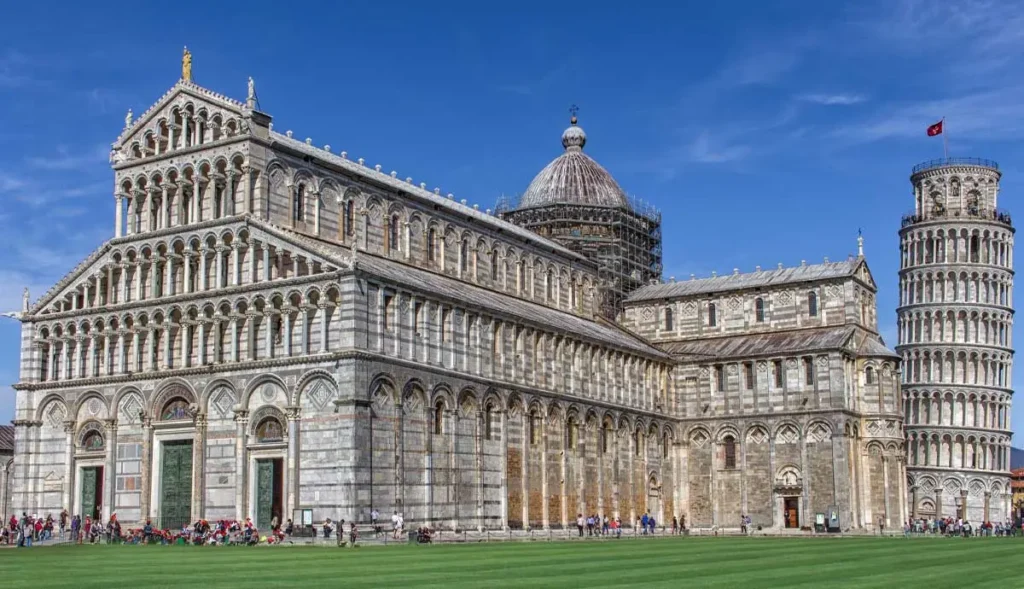
Romanesque architecture, which flourished from the 10th to the 12th centuries, represents a period of significant architectural development in medieval Europe. Characterized by its robust and solid forms, Romanesque architecture marked a departure from the lighter, more intricate styles of the Byzantine and earlier Christian periods. This style is defined by its use of heavy masonry, rounded arches, thick walls, and barrel vaults, which together created a sense of stability and permanence.
One of the hallmarks of Romanesque architecture is the use of the barrel vault—a continuous series of arches that form a tunnel-like structure—covering the nave and side aisles. This architectural feature not only provided structural support but also allowed for the creation of larger and more imposing church interiors. The use of thick, stone walls was essential to support the weight of the vaulted ceilings and to provide the necessary support for the building’s massive stonework.
Romanesque churches often featured a longitudinal plan with a long nave, transept, and an apse, creating a cross-shaped floor plan that was symbolic of the Christian faith. The addition of towers and fortified elements gave these buildings a fortress-like appearance, reflecting the turbulent times in which they were built. Decorative elements, such as sculpted capitals and intricate tympanums, often adorned the entrances of Romanesque churches, depicting biblical scenes and figures to convey religious stories to an illiterate populace.
Characteristics and Evolution
Romanesque architecture is characterized by its robust and substantial appearance, reflecting the need for both durability and security during a period marked by frequent conflict and instability in medieval Europe. This architectural style, which emerged in the 10th century and evolved through the 12th century, is distinguished by its use of solid, fortress-like structures designed to withstand the test of time and the pressures of religious and communal life.
Solid, Fortress-Like Structures
One of the defining characteristics of Romanesque architecture is its solid, fortress-like construction. Buildings were designed with thick, heavy walls and minimal openings to provide structural integrity and protection. The imposing nature of Romanesque churches often gave them a defensive, almost fortress-like quality, reflecting both the physical and symbolic strength of the Church. These thick walls were necessary to support the weight of the stone vaults and to insulate the interior from the elements. The monumental scale and enduring materials used in Romanesque architecture were intended to convey permanence and divine stability.
Barrel Vaults and Thick Walls
The use of barrel vaults—continuous arches that create a tunnel-like effect—was another hallmark of Romanesque design. This structural feature allowed for the construction of expansive and uninterrupted interior spaces, necessary for accommodating large congregations and supporting the weight of the stone roof. The barrel vaults, combined with thick, load-bearing walls, provided the necessary support for the massive stone structures and enabled the creation of grand, awe-inspiring interiors. This architectural approach also influenced the development of the Romanesque church’s distinctive cross-shaped floor plan, which included a long nave, transept, and apse.
Key Examples
Abbey Church of Sainte-Foy, Conques
The Abbey Church of Sainte-Foy, located in Conques, France, is a quintessential example of Romanesque architecture. Constructed in the late 11th and early 12th centuries, this church features a classic Romanesque layout with a long nave, transept, and an apse surrounded by radiating chapels. The building’s solid, fortress-like appearance is accentuated by its thick walls and small windows, which create a dramatic interior space bathed in subdued light. The barrel-vaulted nave is supported by robust stone columns, and the church’s sculpted capitals and tympanum above the main entrance vividly depict biblical scenes, illustrating the Romanesque emphasis on narrative through sculpture.
Durham Cathedral, England
Durham Cathedral, completed in the early 12th century, stands as a monumental example of Romanesque architecture in England. The cathedral’s design showcases the characteristic solidity of Romanesque structures, with its massive stone walls and twin towers. The use of ribbed vaulting in the nave is a notable innovation that allowed for greater height and complexity while maintaining the robustness of the Romanesque style. The barrel-vaulted ceilings and substantial columns contribute to the cathedral’s grand and enduring presence. Durham Cathedral’s architectural achievements not only reflect the strength and stability of Romanesque design but also set the stage for the evolution toward Gothic architecture.
Gothic Architecture
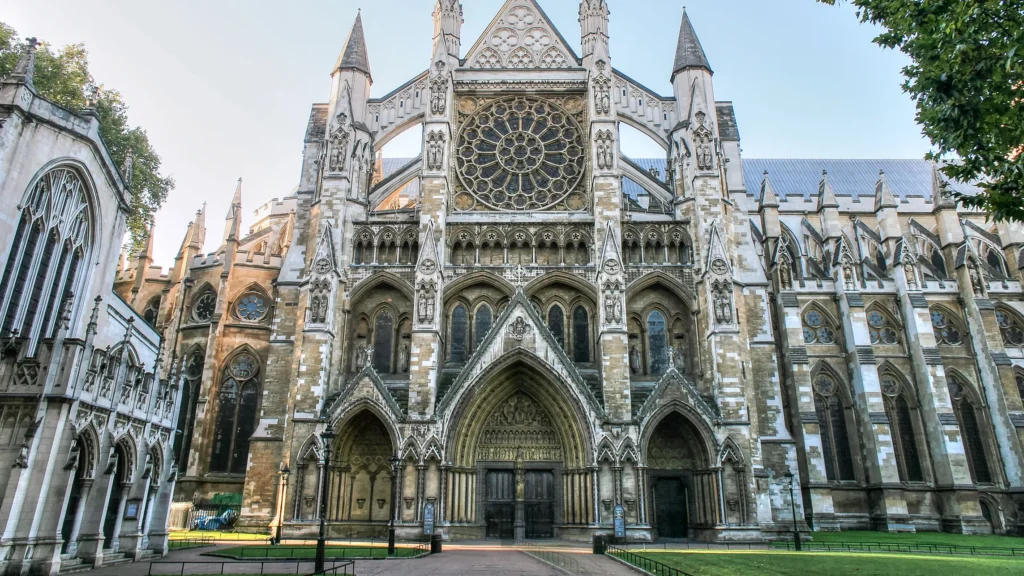
Gothic architecture, which emerged in the 12th century and dominated European building design until the 16th century, represents a profound shift in architectural style characterized by its verticality, lightness, and intricate detailing. Originating in France, Gothic architecture was initially developed to address the growing needs of medieval cathedrals and churches, aiming to create spaces that were both awe-inspiring and spiritually uplifting. The style is renowned for its innovative use of structural elements that allowed for taller, more expansive buildings with larger windows and more elaborate decorations than its Romanesque predecessors.
Pointed Arches, Ribbed Vaults, and Flying Buttresses
The Gothic architectural style is renowned for its innovative use of structural elements that allowed for more ambitious and awe-inspiring designs than ever before. Central to this innovation are the pointed arches, ribbed vaults, and flying buttresses.
- Pointed Arches: Unlike the rounded arches of Romanesque architecture, pointed arches distribute weight more efficiently, allowing for taller and narrower openings. This structural feature not only facilitated the creation of higher ceilings but also contributed to the distinctive vertical lines of Gothic architecture. The pointed arch enabled architects to construct large windows and expansive interiors, further emphasizing the verticality of the design.
- Ribbed Vaults: Ribbed vaulting is a technique that involves the use of intersecting ribs or framework to support a vaulted ceiling. This method provided greater flexibility in the design of ceilings, allowing for more complex and varied patterns than the barrel vaults of earlier styles. Ribbed vaults also distributed the weight of the roof more effectively, which contributed to the overall stability of the structure and supported the creation of higher and more intricate ceilings.
- Flying Buttresses: The flying buttress is an external support system that transfers the weight of the vaults and upper walls away from the building’s main structure. By channeling the weight to external supports, flying buttresses allowed for thinner walls and larger windows. This architectural breakthrough was crucial for creating the high, expansive interiors characteristic of Gothic cathedrals, as it permitted the construction of walls with large stained glass windows and increased the overall lightness and openness of the design.
Emphasis on Verticality and Light
Gothic architecture places a strong emphasis on verticality and the use of natural light, reflecting its spiritual and symbolic aims.
- Verticality: Gothic architecture is characterized by its vertical lines and soaring heights. This emphasis on upward movement is achieved through the use of pointed arches, ribbed vaults, and spires, which together create a sense of reaching towards the heavens. The verticality of Gothic buildings was intended to inspire awe and convey a connection between the earthly and the divine. The tall, slender columns and elongated spaces within Gothic Historic churches and cathedrals evoke a sense of the infinite and the celestial.
- Light: The incorporation of large stained glass windows is another defining feature of Gothic architecture. These windows not only allowed for more natural light to enter the building but also created a mesmerizing interplay of color and illumination within the interior space. The use of stained glass was both practical and symbolic, as the vibrant colors and intricate designs of the windows were meant to enhance the spiritual experience by representing divine light and the heavenly realm. The interplay of light and color through the stained glass helped to create an ethereal atmosphere, enhancing the sense of sacredness and transcendence.
Key Examples
Notre-Dame de Paris, France
Notre-Dame de Paris, completed in the 13th century, is one of the most iconic examples of Gothic architecture. Its design exemplifies the key breakthroughs of the Gothic style, including the use of pointed arches, ribbed vaults, and flying buttresses. The cathedral’s façade is adorned with intricate sculptures and rose windows, which reflect the emphasis on decoration and light. The interior of Notre-Dame features soaring vaults and an expansive nave, creating a sense of verticality and grandeur. The cathedral’s famous flying buttresses provide structural support while allowing for large, stained glass windows that fill the interior with light and color.
Chartres Cathedral, France
Chartres Cathedral, constructed primarily between 1194 and 1220, showcases the purity and refinement of Gothic architectural innovations. The cathedral is renowned for its extensive use of flying buttresses, which support its high, thin walls and large windows. The ribbed vaulting in the cathedral’s nave allows for a dramatic and complex ceiling design, while the pointed arches contribute to the building’s vertical emphasis. Chartres Cathedral is also famous for its stunning stained glass windows, which feature vibrant colors and detailed biblical scenes, creating a breathtaking effect of light and illumination within the cathedral. The combination of structural innovation and artistic decoration in Chartres Cathedral exemplifies the Gothic pursuit of both aesthetic beauty and spiritual transcendence.
Renaissance Churches
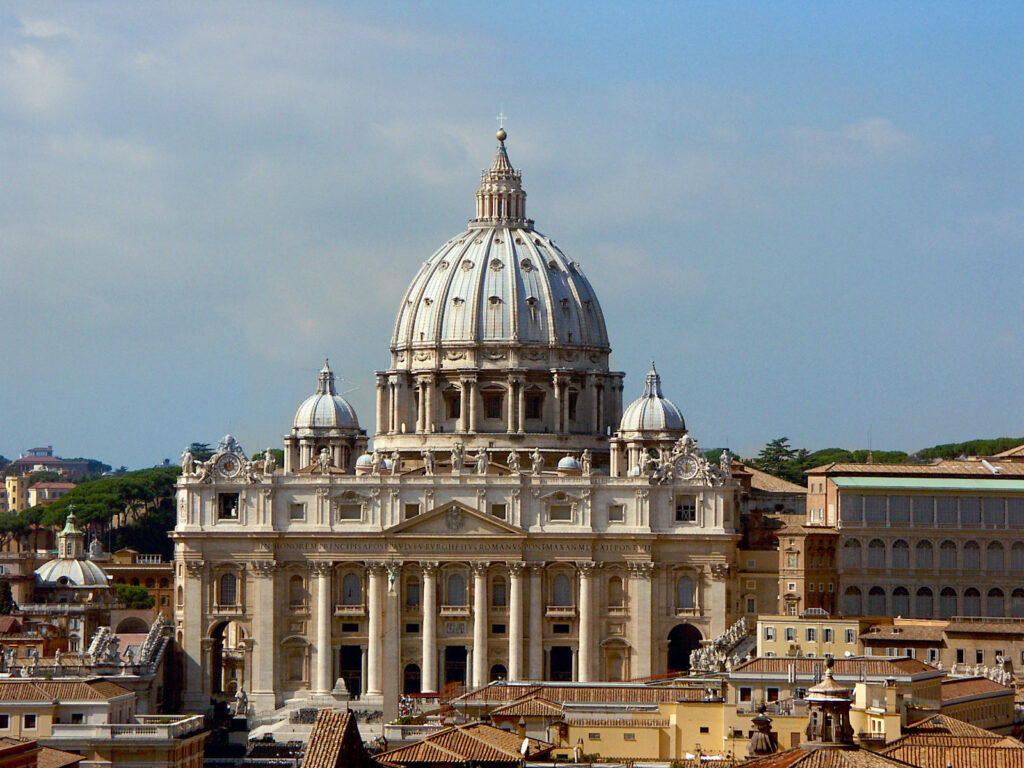
Renaissance churches, which emerged in the 15th and 16th centuries, represent a pivotal shift in architectural style and design, characterized by a revival of classical principles and a focus on symmetry, proportion, and harmony. This period marked a departure from the medieval Gothic style, as architects drew inspiration from the classical architecture of ancient Rome and Greece, incorporating new ideas and techniques into church design. The Renaissance era sought to reconcile the spiritual aspirations of the church with the principles of classical antiquity, resulting in buildings that were both visually striking and thematically profound.
Revival of Classical Forms
Renaissance churches are marked by a revival of classical forms that reintroduced the architectural principles of ancient Rome and Greece. This revival was driven by a renewed interest in the classical past and a desire to harmonize religious architecture with the aesthetics and philosophies of antiquity. Renaissance architects meticulously studied the ruins of Roman temples, basilicas, and other structures, drawing inspiration from their use of columns, pilasters, and pediments.
Integration of Symmetry and Proportion
Symmetry and proportion became central themes in Renaissance church design, reflecting the classical emphasis on balance and order. Renaissance architects applied the principles of symmetry—where elements are arranged in a mirrored, balanced fashion—to create harmonious and aesthetically pleasing buildings. Proportional systems, based on mathematical ratios and geometric shapes, guided the design of facades, plans, and interior spaces. This approach sought to achieve a sense of equilibrium and visual coherence, contrasting with the more intricate and vertical focus of Gothic architecture. The use of classical orders (Doric, Ionic, and Corinthian) was also revived, providing a framework for the placement of columns, entablatures, and arches in a way that echoed the grandeur of ancient Rome.
Influence of Renaissance Art and Humanism
The Renaissance was not only a period of architectural innovation but also a time of profound artistic and intellectual development. The principles of Renaissance art and humanism deeply influenced church architecture, emphasizing a renewed focus on human experience, perspective, and naturalism. Humanism, which emphasized the value and agency of the individual, inspired architects to design spaces that were more open and accessible, aligning with the human-centered approach of Renaissance art. The incorporation of realistic proportions, naturalistic decoration, and clear, open spaces in church design reflects this broader cultural shift. Renaissance art, with its focus on perspective and proportion, informed the spatial arrangements and decorative elements of churches, resulting in buildings that were both spiritually and artistically rich.
Key Examples
St. Peter’s Basilica, Vatican City
St. Peter’s Basilica, one of the most iconic examples of Renaissance architecture, epitomizes the revival of classical forms and the integration of symmetry and proportion. Designed by prominent architects such as Donato Bramante, Michelangelo, and Gian Lorenzo Bernini, the basilica features a grand dome that exemplifies Renaissance innovation in dome construction. The basilica’s plan is based on a centrally organized design with a large dome at the center, reflecting classical principles of symmetry and proportion. The façade is adorned with classical columns, pilasters, and entablatures, creating a harmonious and imposing entrance. The incorporation of Renaissance art and humanism is evident in the basilica’s interior, where Michelangelo’s Pietà and Bernini’s monumental altar contribute to the overall spiritual and artistic experience.
Santa Maria del Fiore (Florence Cathedral), Italy
Santa Maria del Fiore, commonly known as the Florence Cathedral or the Duomo, is another key example of Renaissance church architecture. The cathedral’s design, primarily by Filippo Brunelleschi, features a massive dome that was a groundbreaking achievement in engineering and classical revival. The use of classical orders and symmetrical elements in the façade, combined with Brunelleschi’s innovative dome design, exemplifies the Renaissance focus on proportion and balance. The cathedral’s interior and exterior reflect the influence of Renaissance art and humanism, with detailed sculptures and frescoes enhancing the visual and spiritual experience. The harmonious integration of classical forms with innovative design elements makes the Florence Cathedral a landmark of Renaissance architecture and a testament to the era’s architectural and artistic achievements.
Baroque and Rococo Churches
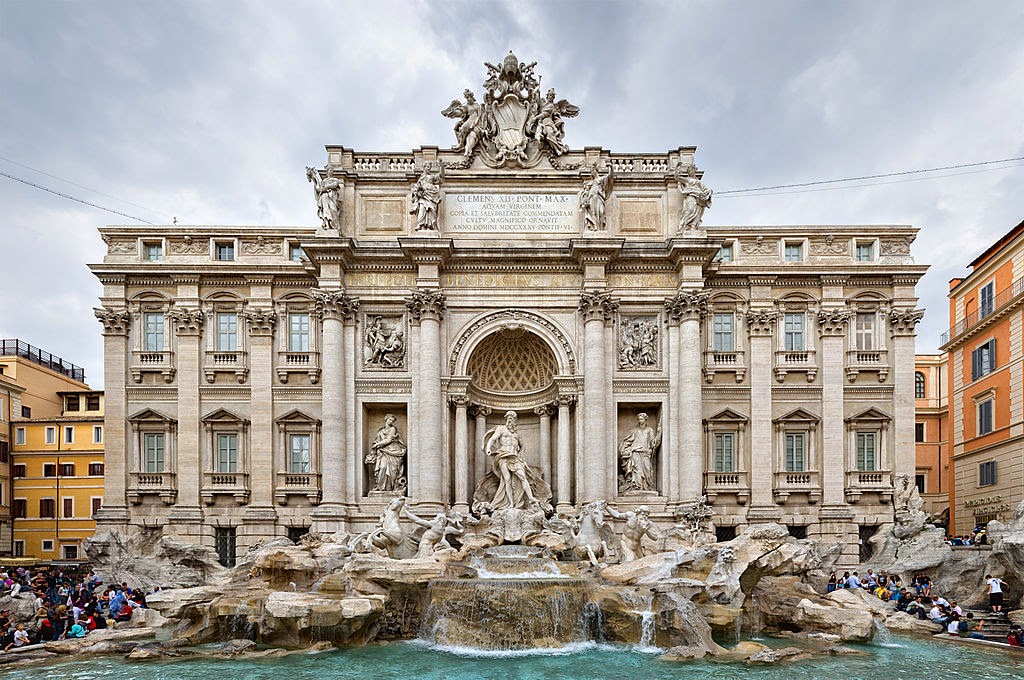
Baroque and Rococo churches, which emerged in the 17th and 18th centuries, represent a period of dramatic and ornate architectural style that reflects the cultural and religious transformations of the time. Both styles are characterized by their elaborate decoration, dynamic forms, and a focus on creating immersive, emotionally charged environments. While Baroque and Rococo architecture share some similarities, they are distinguished by their unique characteristics and aesthetic goals.
Opulence and Drama
Emphasis on Movement, Emotion, and Grandeur
Baroque and Rococo churches are celebrated for their opulence and dramatic flair, designed to evoke powerful emotional responses and convey a sense of grandeur. Baroque architecture, in particular, is characterized by its dynamic use of space and light, creating an immersive and theatrical experience for the viewer. The style emphasizes movement and energy through curvilinear forms, sweeping lines, and dramatic contrasts between light and shadow. This approach was intended to captivate and inspire awe, reflecting the Catholic Church’s desire to reinforce its spiritual authority and engage the senses of worshippers.
The Rococo style, while also opulent, takes a different approach by focusing on elegance and charm rather than the grandiose drama of Baroque architecture. Rococo designs often feature more delicate and playful elements, such as asymmetrical patterns and intricate ornamentation, which contribute to a refined and graceful atmosphere. The emphasis is on creating an intimate and enchanting space that reflects the tastes of the aristocracy and aligns with the Rococo’s lighter, more whimsical aesthetic.
Use of Elaborate Decorations and Frescoes
Both Baroque and Rococo churches are renowned for their elaborate decorations and frescoes, which play a central role in enhancing the overall sense of opulence and drama. In Baroque churches, decoration is characterized by intricate stucco work, gilded moldings, and dramatic frescoes that cover ceilings and walls. These elements are designed to draw the viewer’s eye upwards, creating a sense of divine splendor and grandeur. The frescoes often depict religious scenes and figures in dynamic poses, contributing to the overall theatrical effect and reinforcing the emotional impact of the space.
In Rococo churches, the decoration is more delicate and whimsical, featuring elaborate plasterwork and gilded accents. The frescoes and stucco work in Rococo churches often include playful and ornate motifs, such as shells, flowers, and swirling forms, which add to the charm and elegance of the interior. The use of pastel colors and light materials creates a more intimate and refined atmosphere compared to the dramatic and opulent spaces of the Baroque period.
Key Examples
The Jesuit Church (Church of Saint Ignatius), Vienna
The Jesuit Church, also known as the Church of Saint Ignatius, is a prime example of Baroque architecture that embodies the opulence and drama of the style. Designed by architect Jakob Prandtauer and completed in 1627, the church features a grandiose interior characterized by its dynamic use of space and light. The ceiling is adorned with elaborate frescoes depicting heavenly scenes and religious figures, creating a sense of celestial grandeur and movement. The use of gilded decoration, ornate stucco work, and dramatic contrasts of light and shadow contributes to the overall theatrical effect, reflecting the Baroque emphasis on creating an immersive and emotionally charged environment.
San Carlo alle Quattro Fontane, Rome
San Carlo alle Quattro Fontane, designed by Francesco Borromini, is a quintessential example of Baroque architecture with a focus on movement and emotion. Completed in 1646, the church is renowned for its dynamic and curvilinear façade, which creates a sense of fluidity and movement. The interior features an intricate and innovative use of space, with a richly decorated dome and complex stucco work that enhances the sense of drama and grandeur. Borromini’s design emphasizes the dramatic interplay of light and shadow, contributing to the church’s overall opulent and theatrical atmosphere. The elaborate decoration and dynamic forms of San Carlo alle Quattro Fontane exemplify the Baroque focus on creating an awe-inspiring and emotionally engaging space.
The Jesuit Church and San Carlo alle Quattro Fontane are exemplary of how Baroque architecture employs opulence, drama, and elaborate decoration to create spaces that inspire awe and convey a powerful emotional impact.
Neo-Gothic and Revival Styles
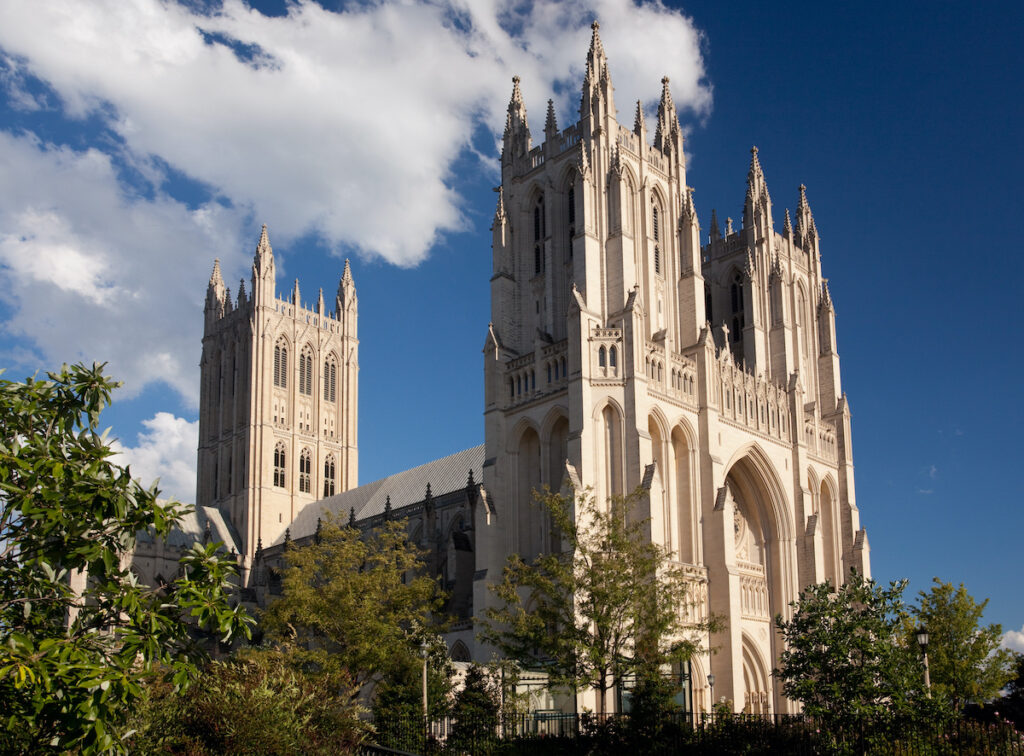
The Neo-Gothic and Revival styles represent a resurgence of earlier architectural forms and ideals, reflecting a renewed interest in historical styles and their cultural significance. These movements, which gained prominence in the 19th century, sought to revive and reinterpret past architectural traditions, often blending them with contemporary techniques and aesthetics.
19th-Century Revivals
The 19th century witnessed a series of architectural revivals, driven by Romanticism, a renewed interest in medievalism, and a rise in nationalism. These revivals sought to reconnect with historical architectural styles and ideals, blending them with contemporary needs and aesthetic preferences. The period saw a profound engagement with past architectural forms, particularly Gothic, as architects and designers drew inspiration from earlier centuries to create buildings that reflected contemporary cultural and political values.
Romanticism and the Return to Gothic Forms
Romanticism, a cultural movement that emphasized emotion, nature, and a longing for the past, played a significant role in the 19th-century architectural revivals. This movement fostered a renewed appreciation for the Gothic style, which was seen as a symbol of the mystical and sublime aspects of the medieval past. The return to Gothic forms, known as the Gothic Revival or Neo-Gothic style, was characterized by a fascination with the dramatic and ornate elements of medieval architecture, including pointed arches, ribbed vaults, and intricate tracery.
- Gothic Revival: The Gothic Revival was driven by Romantic ideals that valued the emotional and spiritual depth associated with Gothic architecture. This revival sought to recapture the grandeur and intricacy of medieval Gothic buildings, often incorporating modern materials and techniques while adhering to traditional forms. The revival was not only an architectural trend but also a reflection of broader cultural and artistic movements that embraced historical nostalgia and a desire for connection with the past.
Influence of Medievalism and Nationalism
The 19th century also saw the influence of medievalism and nationalism on architectural design. Medievalism, the interest in and romanticization of the Middle Ages, contributed to the revival of Gothic and other historical styles. This interest was often linked to a sense of national identity and pride, as countries sought to evoke historical traditions and symbols in their architecture.
- Medievalism: The fascination with the medieval past was reflected in the design of churches and public buildings that sought to evoke the perceived virtues and grandeur of medieval times. This influence extended to various architectural styles, including Neo-Romanesque and Renaissance Revival, each drawing on different aspects of historical architecture to create a sense of continuity with the past.
- Nationalism: Nationalist sentiment played a crucial role in the 19th-century architectural revivals, as countries used historical styles to express their cultural identity and assert their historical significance. The revival of Gothic and other historical forms was often associated with a desire to celebrate national heritage and convey a sense of historical continuity and pride.
Key Examples
Westminster Abbey, London
Westminster Abbey, although originally constructed in the 11th century, underwent significant 19th-century renovations and additions that reflect the Gothic Revival style. Under the guidance of architect Augustus Pugin, the Abbey’s restoration and expansion in the mid-19th century incorporated Gothic elements, including pointed arches, ribbed vaults, and intricate stonework. These modifications were part of a broader movement to restore and enhance the Abbey’s medieval character, aligning with the Romantic fascination with Gothic architecture and its association with national and spiritual significance.
Cologne Cathedral, Germany
Cologne Cathedral is a prominent example of the 19th-century Gothic Revival, reflecting both medievalism and nationalism. Construction of the cathedral began in the 13th century but was halted and resumed in the 19th century, culminating in its completion in 1880. The 19th-century restoration and continuation of the cathedral were guided by architects such as Ernst Friedrich Zwirner, who adhered to the original Gothic design while incorporating modern techniques. The cathedral’s towering spires, pointed arches, and elaborate façades embody the Gothic Revival’s emphasis on historical grandeur and its role in fostering a sense of national pride and cultural continuity.
The 19th-century revivals were a period of architectural experimentation and historical reinterpretation, driven by Romantic ideals, medievalism, and nationalist sentiments. The revival of Gothic and other historical forms reflected a broader cultural movement that sought to reconnect with the past and express contemporary values through architectural design.
Modern and Contemporary Churches

Modern and contemporary churches reflect the evolving nature of architectural design in response to the changing needs and values of society. These churches incorporate innovative materials, techniques, and design philosophies, embracing both functional and symbolic considerations to create spaces that resonate with contemporary worship practices and cultural contexts.
Innovations in Design
Incorporation of New Materials and Technologies
Innovations in design for modern and contemporary churches have been driven by the incorporation of new materials and technologies, which allow architects to explore novel forms and create more flexible, functional spaces. The use of advanced materials such as reinforced concrete, steel, and glass has transformed traditional church architecture, enabling the construction of expansive, open interiors and the integration of complex, sculptural forms. Additionally, the application of cutting-edge technologies, including computer-aided design (CAD) and parametric modeling, has facilitated more precise and inventive design solutions, allowing for greater experimentation with structural and aesthetic elements.
- Reinforced Concrete and Steel: Modern churches frequently use reinforced concrete and steel to create innovative structural solutions. Reinforced concrete enables the construction of large, uninterrupted spaces with complex geometries, while steel allows for lighter, more flexible structures. These materials support bold architectural visions and the creation of visually striking forms.
- Glass and Transparency: The use of glass in contemporary churches often emphasizes transparency and openness, allowing natural light to flood interior spaces and fostering a connection between the indoors and outdoors. Glass facades and skylights contribute to the spiritual atmosphere by enhancing the interplay of light and shadow.
Minimalism and Functionalism in Church Design
Minimalism and functionalism have become key design principles in modern and contemporary church architecture. These approaches prioritize simplicity, clarity, and practicality, reflecting a shift away from ornate and elaborate designs towards more streamlined and functional spaces. Minimalist design focuses on the essential elements of form and function, using clean lines, open spaces, and restrained decoration to create serene and contemplative environments. Functionalism emphasizes the efficient use of space and materials, ensuring that the design serves the practical needs of the congregation while maintaining a cohesive aesthetic.
- Minimalist Aesthetics: Minimalist churches are characterized by their simplicity and understated elegance. Design elements are pared down to the essentials, with a focus on creating a tranquil and meditative environment. The use of natural materials, simple forms, and ample natural light contributes to the minimalist aesthetic.
- Functional Design: Functionalism in church design involves creating spaces that are adaptable and meet a variety of needs. This can include flexible worship areas, multifunctional spaces for community activities, and practical layouts that enhance accessibility and usability.
Key Examples
Chapel of Notre-Dame du Haut, Ronchamp
Designed by architect Le Corbusier and completed in 1955, the Chapel of Notre-Dame du Haut in Ronchamp, France, exemplifies the integration of new materials and innovative design principles. The chapel’s use of reinforced concrete allows for its distinctive sculptural form, with sweeping curves and dynamic shapes that create a sense of movement and transcendence. The design incorporates large, irregularly placed windows that let in natural light, enhancing the spiritual experience within the chapel. Le Corbusier’s minimalist approach is evident in the building’s simplicity and the emphasis on creating a profound and serene space for worship.
Tadao Ando’s Church of the Light, Japan
The Church of the Light, designed by Tadao Ando and completed in 1989, is a significant example of contemporary church architecture that incorporates minimalist and functionalist principles. The church’s design features a striking cross-shaped cutout in the concrete wall, which allows natural light to penetrate the interior and create a dramatic spiritual effect. The use of raw concrete and the emphasis on geometric simplicity reflect Ando’s minimalist approach, while the layout of the church is functional and adaptable, supporting various forms of worship and community activities. The integration of natural light and the focus on essential forms underscore the building’s serene and contemplative atmosphere.
Innovations in design for modern and contemporary churches reflect a dynamic interplay between new materials, technologies, and design philosophies. These advancements enable architects to create functional, aesthetically compelling spaces that address both spiritual and practical needs, resulting in buildings that resonate with contemporary values and enhance the experience of worship.
Conclusion
The journey through the evolution of historic churches and Cathedrals is a rich tapestry of innovation, tradition, and cultural expression. From the early Christian basilicas to the bold experiments of contemporary design, each era has contributed unique perspectives and solutions to the creation of sacred spaces. This exploration highlights the profound impact that architectural styles and technologies have had on the spiritual experience and communal life of congregations.
The transition from the solid, fortress-like structures of Romanesque churches to the soaring, light-filled interiors of Gothic cathedrals illustrates a shift in architectural priorities from stability and security to transcendence and divine illumination. The Baroque and Rococo periods brought a new level of opulence and drama, reflecting the era’s emphasis on emotion and grandeur. The Renaissance revival, with its return to classical forms, and the subsequent Neo-Gothic and Revival styles, demonstrated a fascination with historical continuity and national identity.
Modern and contemporary churches further push the boundaries of architectural design, embracing new materials and technologies to create spaces that are both functional and spiritually evocative. The minimalist and functionalist approaches of recent decades reflect a desire to create serene environments that facilitate a profound connection with the divine while addressing the practical needs of modern worshippers.
Through each of these periods and styles, the essence of church architecture remains a reflection of humanity’s quest for meaning, connection, and expression. The ongoing evolution of church design continues to adapt to the changing needs and values of society, offering spaces that not only serve religious functions but also inspire and uplift the human spirit.
The journey through historic and contemporary church architecture underscores the importance of architecture in shaping our spiritual and cultural landscapes. It is a testament to the enduring power of design to influence and enhance the experience of worship and community, bridging the gap between the past and the present in the pursuit of spiritual fulfillment and communal harmony.
The Evolution of Church Architecture as a Reflection of Spiritual and Cultural Shifts
The evolution of church architecture offers a profound reflection of spiritual and cultural shifts throughout history. From the early Christian basilicas that symbolized the nascent church’s desire for stability and authority, to the grand Gothic cathedrals that embodied an aspiration for divine transcendence, each architectural style has mirrored the changing priorities and beliefs of its time. The solid, fortress-like Romanesque churches conveyed a sense of security and permanence, while the Gothic period introduced verticality and light, reflecting a deeper spiritual yearning for the divine.
The Baroque and Rococo periods, with their opulent and dramatic designs, mirrored the era’s emphasis on emotion and grandeur. The Renaissance revival embraced classical forms to reconnect with historical ideals and express cultural pride. In the 19th and 20th centuries, modern and contemporary churches responded to new technological advancements and shifting societal values, prioritizing functionality, minimalism, and adaptability.
This architectural journey illustrates how church design is not just a response to practical needs but also a reflection of broader spiritual and cultural currents. The evolution of church architecture provides insight into how religious communities have understood and expressed their beliefs, adapting their sacred spaces to align with contemporary values and technological possibilities.
The Ongoing Legacy
Preservation and Adaptation in Contemporary Contexts
The legacy of historical church architecture is preserved through ongoing efforts to maintain and restore significant buildings, ensuring that their historical and cultural values are preserved for future generations. Preservation projects often involve meticulous restoration work, aimed at preserving original architectural features while addressing the needs of modern use. These efforts not only safeguard the physical integrity of historic churches but also honor their cultural and spiritual significance.
At the same time, adaptation plays a crucial role in ensuring that historic churches continue to serve contemporary needs. Many churches have been reimagined to accommodate modern worship practices, community functions, and accessibility requirements. Adaptive reuse projects might involve repurposing spaces for new functions while respecting their historical character. This balance between preservation and adaptation reflects a commitment to honoring the past while addressing the practical realities of the present.
Future Trends in Church and Cathedral Design
Looking to the future, church and cathedral design is poised to continue evolving in response to emerging trends and societal changes. Future trends in church architecture may include:
- Sustainability: Increasing emphasis on sustainable design practices is likely to shape future church architecture. This includes integrating energy-efficient systems, using eco-friendly materials, and designing buildings that minimize environmental impact. Sustainable design aligns with broader societal concerns about climate change and environmental stewardship.
- Technological Integration: Advances in technology will continue to influence church design, from innovative materials and construction methods to digital and interactive elements that enhance worship experiences. The integration of technology can also support new forms of community engagement and outreach.
- Flexibility and Multipurpose Use: Future church designs may increasingly prioritize flexibility, allowing spaces to serve multiple functions beyond traditional worship. This could include community centers, educational spaces, and gathering areas that reflect the evolving role of churches in contemporary society.
- Inclusive Design: There will likely be a growing focus on creating inclusive and accessible spaces that cater to diverse congregations. This includes designing environments that are welcoming and accommodating for people of all abilities, backgrounds, and ages.
As church and cathedral design continues to evolve, it will reflect both the enduring legacy of historical architectural traditions and the dynamic needs of contemporary society. The future of church architecture promises to build on the rich heritage of the past while embracing innovation and adaptability to meet the challenges and opportunities of the future.
